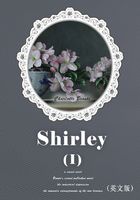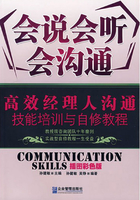The Lesson: What is a closet, really, but a catalogue of the different personas we have auditioned and discarded? Hanging there in our closets are reminders, both good and bad, of who we are, who we've been, and who we've hoped to be. No wonder things can get a bit muddled. In this chapter we will take a two-pronged approach, both practical and theoretical, to getting those racks in order. Think of this chapter as your closet's quest for its authentic self.
"I love America, and I love American women. But there
is one thing that deeply shocks me-American closets. I
cannot believe one can dress well when you have so much."
-Andrée Putman
Closets are often where we hide things: skeletons, forbidden loves, terrible birthday gifts we couldn't return. It is for this reason that deciding what to wear while staring into those murky depths can be not just daunting, but emotionally exhausting as well. That lace bed-jacket bought at the antique store in Vermont? Those velvet jeans that were already too small the day you picked them out? That cocktail dress purchased especially for the party that was an absolute dud? You remember them all. How could you forget? They stare back at you every time you open your closet door. The time has come to wipe the slate clean and cleanse your sartorial palate.
THE PRACTICAL
Let's begin with the nuts-and-bolts approach to setting your closet on the path to wholeness and health. Presumably, you have read one of the thousands of articles on closet care that seem to spring, fungus-like, from the pages of our popular magazines. Thanks to our culture's current mania for organization and those ubiquitous California Closet[1] ads, it seems that the closet should be the centerpiece of one's home. Unless your closet is large enough to receive guests in-and if it is, please think twice about making this a habit-don't fret over a lack of wenge wood shelving and Brunschwig & Fils upholstered poufs. A utilitarian closet is a beautiful thing and absolutely nothing to be ashamed of. What is important is that the closet provides you a relaxed environment from which to select your clothes.
Before we begin the closet-cleansing process, please set aside space for four separate piles. We shall return to these piles, and what goes in them, shortly.
THE THEORETICAL: KIERKEGAARD IN YOUR CLOSET
Who has not suffered that particular depression brought on by a closet full of clothes when one feels that she has nothing to wear? It is our theory that this feeling arises from the discrepancy between your perception of the image your clothing projects and the idealized image you'd like to project in a given situation. The goal is to maximize the correspondence between what you feel conveys the proper image and the items you actually own. This task can only be accomplished when your closet is rid of those items that do not truly make you feel happy and confident when wearing them. This is complex stuff, as you can see. The eternal task of discovering what makes one happy is closely linked to the idea of discovering one's "authentic self." And that's a subject that has preoccupied minds since Cicero worried that laurel wreaths were just so not him.
S?ren Kierkegaard (1813-1855), Danish philosopher, opera lover, and the man Ludwig Wittgenstein called "the most profound thinker of the nineteenth century," can actually be a huge help when it comes to curing one's closet. The author of Fear and Trembling will not tell you explicitly to toss out those clam diggers, but he will supply two enormously helpful ideas.
We find these two ideas in volume one of Kierkegaard's 1843 book Either/Or. The first idea may be clear to you just by reading the preceding sentence. As the title implies, this book is about choice and that is exactly what he suggests you do: Make a choice. In fact, he states that if you do not make choices for yourself, someone else will make them for you. Egad! This simple but powerful idea is not just a life lesson; it is the basis of all personal style. Notice the use of the word "personal." This is not style as dictated-another word for "chosen"-by fashion editors, friends, or pop stars. It is an expression of what speaks to each individual's soul. Listening is not always easy, especially when one's soul demands bell-bottoms in a skinny-jean season. It takes practice and commitment. There may be missteps along the way, but the reward-which is having pride and courage in the convictions of your closet-is worth it.
Ultimately the following process should allow you to divide your closet into four distinct piles.
Choosing what stays and what goes can be intimidating, but we have nothing to fear if we listen to S?ren. He counsels that the unmediated choice is the only choice one will never regret. That means no agonizing over whether or not to keep the jumpsuit. If you have to ask, the answer is: Throw it away. If, however, the item causes heart palpitations of happiness, it goes in pile number one:
The Soul-Stirring Pile. Keep in mind that this pile is not just for fantastic items; that flattering cotton tank you love goes in this pile, too.
If a beloved garment needs some attention, put it in The Repair Pile. You now have exactly five days to go to the dry cleaner or tailor. Do not allow items to languish. If this is a temptation, perhaps the item is not important enough to fix.
The Give-Away and The Throw-Out Piles are where things often get hairy, as in filled with dangers or difficulties. Let's look at what remains in the common closet after the Soul Stirrers and Repairs have been set aside, and decide what to do about what's left on the rack.
ITEMS THAT DON'T FIT
This is a broad category that ranges from the aforementioned velvet jeans to items that do indeed fit, just not well. There is no reason to have something taking up space in your closet that does not make you feel good. These items must go. Perhaps you like to torture yourself by trying on some jeans from a few years ago to see if you can button them. Clothes do not exist to humiliate their owners. Please do not force garments into performing psychological tasks for which they were not designed. Furthermore, please be kind to yourself. They don't fit. Toss 'em.
ITEMS SO EXPENSIVE YOU FEEL HORRIBLY
GUILTY GETTING RID OF THEM
Mistakes were made; find the unloved items a new home. These items are especially pernicious because one remembers the moment of plunking down all that cash or credit every time one glances at them. This can often lead to face-flushing, feelings of unhappiness, and self-recrimination. The goal of this chapter is to remove any closet-based sources of unhappiness, so please, get rid of these items. Since you never wear them, they should be in good condition and therefore avoid the Throw-Out Pile. As they hit the Give-Away Pile, whisper a solemn oath to not make such silly purchases again. Repeat: Cheap Is Chic, Cheap Is Chic, Cheap Is Chic. There, all better. If you feel you must recoup something and the item retains its value, there are always consignment shops, but eBay is much more au courant.
WORK CLOTHES
Perhaps what you wear to work was whisked out of the closet with the items you love. If so, bravo! Many people, especially those who work in more conservative environments, find that a huge chasm stretches between their work and leisure-time looks. Remember Mr. Kierkegaard while surveying your work wardrobe. Do you choose to wear the same pair of black slacks as every other woman in your office? Or is it a matter of channeling all your personality into your leisure wardrobe? If you are Agnes Gooch by day and Chita Rivera by night and on the weekends, something must change. There are plenty of ways to bring a little Chita to your nine-to-five. Work can be draining enough without having to wear drab things devoid of any spark. Why not focus on bringing some of those special items you love into your work wardrobe? This is not to say that basics are bad. A beautiful, flattering pair of charcoal gray slacks are a marvel to behold; a deadly dull, ill-fitting suit jacket is not. Notice the use of ill-fitting. If the jacket is deadly dull, fits you well, and makes you feel confident and happy on interviews, that's a whole different deadly dull jacket. We all need practical items, but the key is to make sure they are also great looking and flattering. If you wouldn't want to run into an ex-lover, that's a sure sign you could do better. For the rest of your work wardrobe, if you can't summon more than a "meh," we respectfully suggest you get rid of it.
THOSE ITEMS THAT-FOR REASONS
UNKNOWN-YOU NEVER WEAR
Perhaps you try these items on and then hang them back up. Perhaps you skip right over them like something that's been in the freezer so long you no longer want to eat it. You've just said no too many times. Off it goes.
THE ITEM KEPT BECAUSE ONE DAY,
IT MAY BE CHIC AGAIN
There is no look so strange or unflattering that it will not be recycled. These days it seems to happen with stunning alacrity. Many a woman scoffed at the idea that leggings would ever return, and here they are, back with a vengeance. However, one only has so much space and one never knows if you'll find a trend equally compelling on the next (or third or fourth) go round. Better to move on.
SCENES OF FORMER TRIUMPHS
These are items that you would never, ever wear but keep for purely sentimental reasons. The T-shirt that reads HAPPY SIXTIETH, IRV! or the ratty sweater you were wearing when you got into graduate school. Yes, they remind you of wonderful times, but they have to go. Irv's birthday will live on in your memory, as will the thrill of receiving that fat envelope. Let the physical items go on to new adventures. You'll retain the wonderful memories and more shelf space. It's a win/win situation!
THE REPEATS, REDUXES, AND REPRISES
Perhaps you find nothing as restful as a day spent at your local mall, fighting the crowds for yet another cardigan because…who doesn't need twelve black angora cardigans? If you shop like a drunken sailor, chances are that you own far more than you will ever be able to wear. This leads to Creeping Closet Syndrome-the sad state of affairs in which your wardrobe takes over your home.[2]
EXCEPTIONS
We are loath to admit it, but in certain very rare cases it is permissible to keep a piece that is never worn. We've all asked older relatives why they didn't hold on to that fabulous outfit we've seen in photos. It is permissible to keep something for posterity. However, it is highly unlikely that more than one piece per closet overhaul is worthy of preservation for the sake of unborn grandchildren. Assess with a keen eye.
If radical shape-shifting is going on-a diet or pregnancy-of course it makes sense to hold on to items that will soon fit again. Be honest, though. If those last ten pounds have been on their way out for the last ten years, why not make room in the closet for things that will fit now? Carpe diem!
Are you ready? Begin! Toss, toss, toss into the Give-Away Pile. It is surprising how liberating divesting oneself of old outfits can be. You are allowing your closet to represent who you are now. You've just gotten better and better, why not let your closet come along, too?
WHAT YOU LOVE
Well done! The wheat and chaff have been parted. Only delightful pieces should remain. Now that they are all mingling together and not lost in the closet, look for a connection, a narrative through-line. In other words, is there something that the pieces you love have in common? Bright colors, marabou trim? Sumptuous fabrics and shades of gray? Sometimes seeing all of one's favorites grouped together can be a bit of a shock. One may think of herself as a Jackie Bouvier type, but her most beloved pieces are more like burlesque star Tempest Storm. What to do?
First, congratulations-your soul has spoken! A discovery has been made. Look closely at the pieces. What do they have in common? Is it a shared silhouette? Are they waist enhancing or perhaps light and ethereal? What the pieces have in common can be thought of as their form. If, for instance, favored pieces tend toward the ethereal, it does not mean that dressing head-to-toe like a fairy is a good idea. It means that incorporating pieces light of form will ensure that you are happy when the closet door opens. Let us now return to Mr. Kierkegaard for the second of his two important ideas.
Imagine a gin martini served in a pint glass or a Wagnerian opera-version of Sex and the City. Both might have their…intoxicating charms, but neither would be a flawless fit. The martini would be undrinkable because it would get warm much faster than you could quaff it. The glass the martini is served in is an essential part of the martini itself. Carrie Bradshaw wouldn't be nearly as much fun if she and Mr. Big both drank a magic potion and sang the same infernal love duet for four hours. The thirty-minute television format is the ideal medium for her banter and romance.
So should it be for you and your clothes. For Kierkegaard, a "classic" results when form and content meet in perfect harmony. In our case, the content is the person inside the garment; the form is the garment itself. Some form and content marriages are quite obvious. Examples that come to mind are Paris Hilton and the line Heatherette, or Audrey Hepburn and Givenchy. Rarely, if ever, have those four names appeared in the same sentence. Nonetheless, what is important is that the particular strengths of the content-Paris and Audrey-are showcased by the form. What isn't successful is choosing a rigid form and trying to wedge one's unhappy content into it. If one is lucky enough to have a Monica Bellucci-esque figure, wearing a Hedi Slimane Dior man's suit might be difficult. Borrowing androgynous elements while respecting the line of one's figure, though, will be chic. A more quotidian example might be the financial consultant who goes to work every day in black slacks and pumps, but loves anything related to ballet. By switching those black slacks for a softer, slightly full skirt, paired with a slim black turtleneck and a belt at her true waist, she can bring some of the form she loves into play without sacrificing loyalty to her content.
"Yes, yes," you say, "form and content are fine, but what about this collection of soul-stirring clothes now outside of my closet?" Lovely question! Those are your clothes for the next seven days. Each day you must wear one soul-stirring item. Think of it as strength training for the style muscles. Too often we "save" things we love for a special occasion; as a result we rarely wear the very things we love best. Perhaps that silk slip dress could go to work with black tights, flats, and a cashmere cardigan. Throw that sparkly cardigan on over a tank top and jeans. Just get them in the rotation. The confidence you'll gain is the reward for all your hard work.
The Blind Spot: If getting rid of things were easy, there wouldn't be an overstuffed closet to be found. After you have assembled your Soul-Stirring Pile, take another look. Does everything deserve to be there? Be ruthless. If the thought of giving away an item that was so fun five years ago makes you sad, by all means grieve. Then get rid of it.
Notes
[1] I'll admit that as a resident of the great city of New York, I have a point of view about closets that has been formed by living here: They are a rare and precious commodity. I've lived in the same apartment for the last fifteen years. It's on the top floor of an 1865 brownstone and contains three closets totaling seven linear feet of hanger space. Consequently, I must employ huge doses of self-discipline in order to stave off Collier Brothers Syndrome, an affliction that turns off the synapses that allow for the editing of clothing and possessions, including newspapers and magazines, and eventually leads to death. Really. And by the way, the Collier brothers lived in NYC. Coincidence? I think not.
[2] I've witnessed this firsthand. My mother built a beautiful house on the Delaware shore (the Hamptons of the Mid-Atlantic) and it is chockablock with closets. She lives alone, and is nothing if not neat, yet there is no room in either closets or dressers for me to put anything when I visit.
Here is the context: She built a two-story house that allows for her to live on the first floor exclusively. The second floor consists of a loft overlooking the living room and foyer. There are two closets in the loft, plus a doorway to a large attic space. There are two guest bedrooms, each of which has a large closet. Every closet is full. A couple of years ago, I purged the attic of unnecessary things, so my mother was left with an orderly and open space. When I returned the following Christmas, she asked me to put away her decorations before I left. When I opened the door to the attic, I let out a cry of anguish. She had installed a closet rod that ran the length of the room-and that rod was full of clothes on hangers. AHHHHHHH!!!














